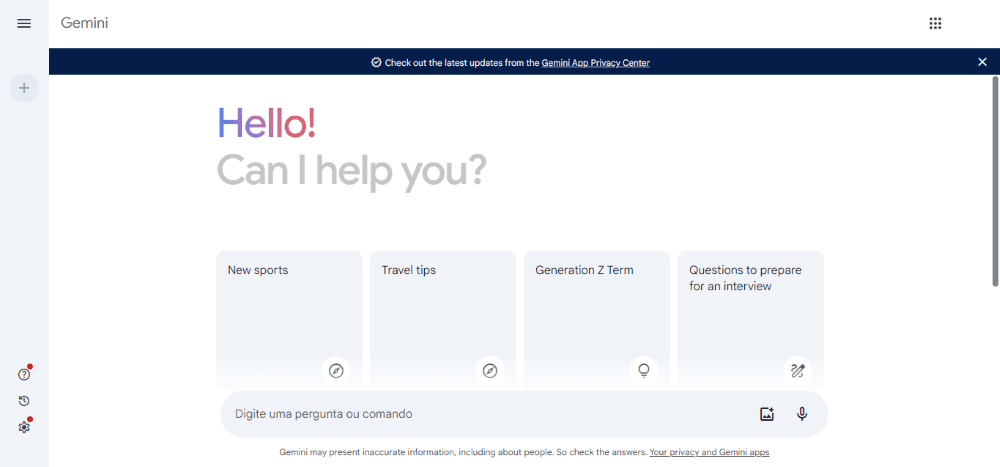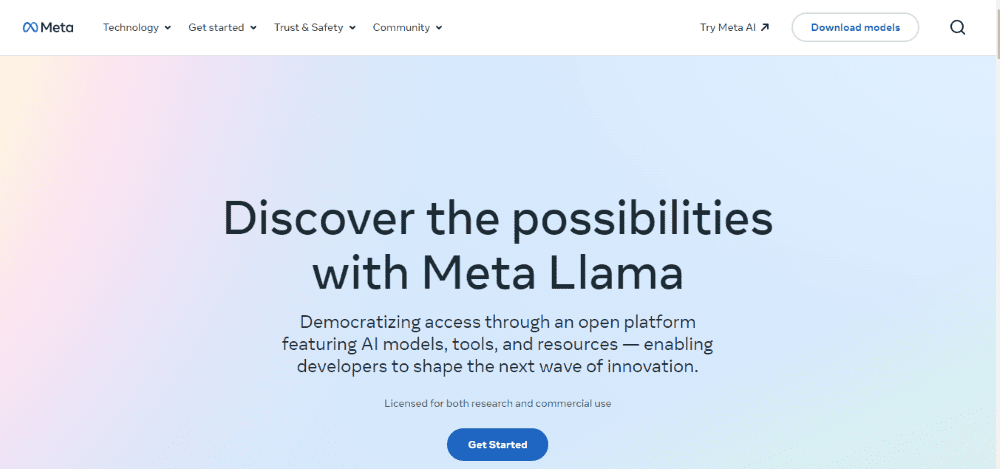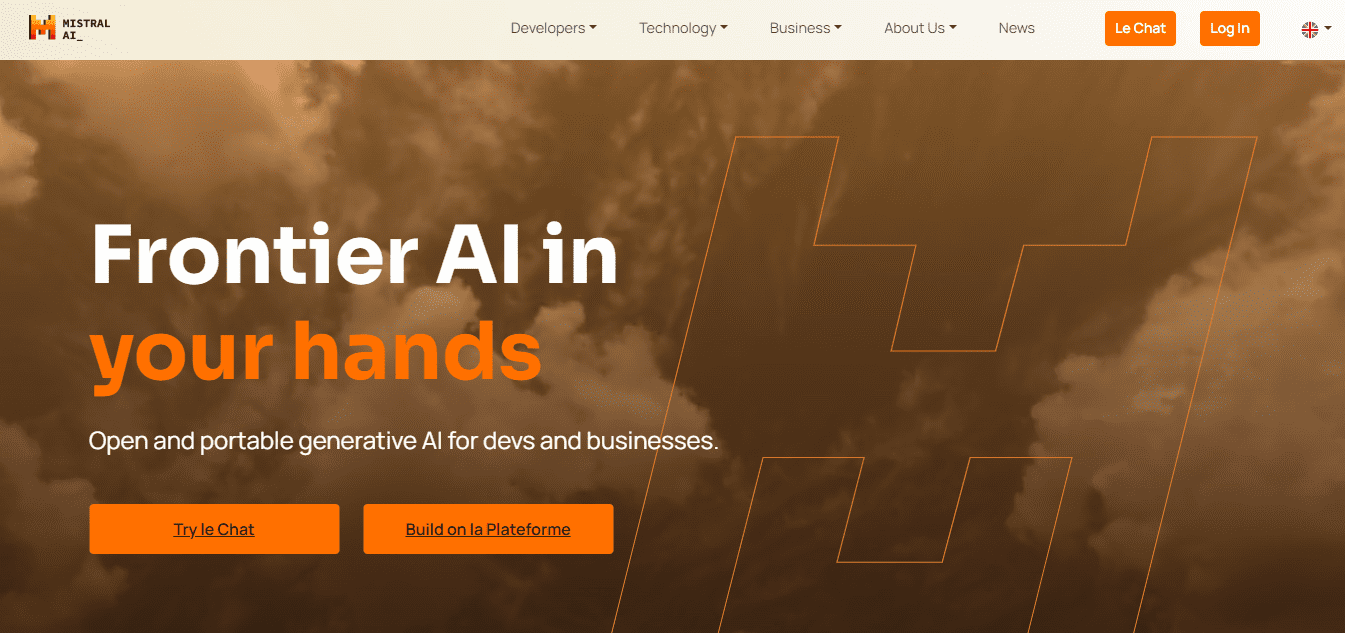An LLM (Large Language Model) is anartificial intelligence (AI) that can recognize and generate texts. LLMs are trained on large volumes of data (websites, forums, documents, etc.), hence the name "large". The most common LLMs are ChatGPT, Gemini, Claude and Llama.
As LLMs become a dominant trend in the market, their relevance grows, standing out as one of the main drivers of business efficiency and innovation.
With this in mind, this article aims to provide a comprehensive overview of LLMs, explaining what they are, how they work and how they can be applied in companies. You will also learn about the different models and some examples of LLMs.
How does the LLM work?
The central mechanism of LLM is attention, which allows the model to identify and evaluate different parts of the text in order to better understand the context and relevance of each word or phrase.
During training, LLMs are exposed to huge sets of textual data, such as books, articles and websites, to learn linguistic patterns and language structure.
They are trained to predict the next word in a sequence based on the previous ones, adjusting their internal parameters (weights) to minimize errors. This process is repeated countless times, allowing the model to improve its ability to generate coherent and contextually appropriate responses.
After the training, when the LLM receives a new text, it uses its accumulated knowledge to generate a relevant response.

What Are the Different Types of LLMs?
LLMs can be categorized into different types based on their capabilities, architectures and applications. Here are some of the most common types of LLMs:
Autoregressive Models: These models generate text by predicting the next word based on the previous ones. Popular examples include OpenAI's GPT-4 and Google's Gemini, widely used for tasks such as creative writing and composing chatbot responses;
Encoder-Decoder Models (Seq2Seq): these models are designed to transform an input sequence into another output sequence, which is useful for machine translation and text summarization. A famous example is the original Transformer, which uses an encoder-decoder architecture;
Bidirectional models: models such as Google's BERT (Bidirectional Encoder Representations from Transformers) are trained to understand the context of a word in a sentence by analyzing the words before and after it. This makes them particularly effective for text comprehension and classification tasks;
Multimodal models: these LLMs are capable of processing and generating not only text, but also other types of data. One example is Tess AI, Pareto's generative AI, which can generate images, texts and codes from simple commands;
Domain-Specific Models: some LLMs are tailored to specific tasks or knowledge domains, such as legal, medical or technical. These models are trained with large volumes of data from a specific field to improve their accuracy and relevance in specialized applications;
Zero-shot and Few-shot Learning Models: these models perform natural language processing tasks without specific training (zero-shot) or with few examples (few-shot), taking advantage of the vast general knowledge acquired during training on a variety of data.
Understand how the LLM Impacts the Corporate Environment and Its Use Cases

LLM is transforming the corporate environment, revolutionizing the way companies operate. Discover its main use cases (what it is used for) and impacts.
- Task automation: LLM automates natural language processes such as report generation, document summarization and service via chatbots and virtual assistants;
- Decision-making: with rapid analysis of large volumes of data, LLM generates valuable insights for interpreting customer feedback, carrying out market analysis and improving internal communications;
- Personalization of Experiences: makes it possible to adapt communications and recommendations at scale, personalizing interactions according to customers' individual needs;
- Innovation and Product Development: the LLM accelerates research, identifies trends and generates innovative ideas based on market data;
- Automatic Translation: LLM facilitates the translation of content between different languages, improving global communication;
- Sentiment Analysis: it analyzes sentiment in feedback and social networks, providing insights into public perception;
- Content Generation and Software Development: from article creation to code review, the LLM supports the development of software and relevant content for marketing and media.
What are the Challenges and Limitations of the LLM?
Despite the many advantages of the LLM, it also presents significant challenges and limitations that organizations need to consider when implementing it. Here are some of them.
DataPrivacy and Security: LLM training involves processing large volumes of data, some of which may be sensitive for the company.
Risks of Misuse (Bias): there is the potential for misuse of LLM, such as the creation of disinformation or harmful content. This requires organizations to implement safeguards and monitor the use of this technology carefully.
Hallucination: although LLM is powerful, it can fail at tasks that are outside the domain or type of data it was trained on. It can also generate incoherent or irrelevant answers if faced with questions outside its scope of knowledge.
Some examples of LLMs
Below are some examples of LLMs, developed by different companies, along with their main characteristics:
Tess AI Light

Fast and economical model, optimized for everyday business tasks.
- Context: 128k tokens
- Cost: Low
- Speed: Fast
Capacities (on a scale from 0 to 1):
- Overall: 0.820
- Natural Sciences: 0.402
- Coding: 0.872
- Common Sense: 0.594
- Mathematical analysis: 0.702
- Reading Comprehension: 0.797
Tess AI v3
Versatile model that excels at complex business tasks, from in-depth analysis to strategic planning.
- Context: 200k tokens
- Cost: High
- Speed: Moderate
Capabilities:
- Overall: 0.883
- Natural Sciences: 0.594
- Coding: 0.920
- Common Sense: 0.683
- Mathematical analysis: 0.711
- Reading Comprehension: 0.931
ChatGPT 4th mini

- Faster and more accessible version of ChatGPT 4o, with strong coding and math skills.
- Context: 128k tokens
- Cost: Low
- Speed: Fast
- (Capabilities: Same as Tess AI Light)
ChatGPT 4th
- Advanced model that excels at general tasks, coding and common sense reasoning.
- Context: 128k tokens
- Cost: High
- Speed: Moderate
Capabilities:
- Overall: 0.887
- Natural Sciences: 0.536
- Coding: 0.902
- Common Sense: 0.691
- Mathematical Analysis: 0.536
- Reading Comprehension: 0.834
Claude 3.5 Sonnet

Balanced model that excels in encoding and reading comprehension, with a large context window.
- Context: 200k tokens
- Cost: High
- Speed: Moderate
Capabilities:
- Overall: 0.883
- Natural Sciences: 0.594
- Coding: 0.920
- Common Sense: 0.683
- Mathematical analysis: 0.711
- Reading Comprehension: 0.931
Claude 3.0 Opus
- Powerful model with strong overall performance and coding skills, but slower processing speed.
- Context: 200k tokens
- Cost: High
- Speed: Slow
Capabilities:
- Overall: 0.857
- Natural Sciences: 0.504
- Coding: 0.849
- Common Sense: 0.594
- Mathematical Analysis: 0.601
- Reading Comprehension: 0.868
Claude 3.0 Haiku
- Fast and economical model with decent overall performance and coding capabilities.
- Context: 200k tokens
- Cost: Low
- Speed: Fast
Capabilities:
- Overall: 0.752
- Natural Sciences: 0.333
- Coding: 0.759
- Common Sense: 0.502
- Mathematical analysis: 0.389
- Reading Comprehension: 0.737
Gemini 1.5 Flash

- Fast model with a massive context window and good overall performance.
- Context: 1M tokens
- Cost: Low
- Speed: Fast
Capabilities:
- Overall: 0.789
- Natural Sciences: 0.395
- Coding: 0.743
- Common Sense: 0.561
- Mathematical Analysis: 0.549
- Reading Comprehension: 0.855
Gemini 1.5 Pro
- Versatile model with excellent overall capabilities and a huge context window.
- Context: 2M tokens
- Cost: Medium
- Speed: Moderate
Capabilities:
- Overall: 0.859
- Natural Sciences: 0.462
- Coding: 0.719
- Common Sense: 0.622
- Mathematical analysis: 0.677
- Reading Comprehension: 0.892
Llama 3.1 405B

- Powerful model with excellent general, coding and mathematical analysis capabilities.
- Context: 128k tokens
- Cost: High
- Speed: Moderate
Capabilities:
- Overall: 0.886
- Natural Sciences: 0.511
- Coding: 0.890
- Common Sense: 0.645
- Mathematical analysis: 0.738
- Reading Comprehension: 0.859
Mistral 7B

- Fast, low-cost model with moderate overall capabilities. Ideal for simple, quick tasks that don't require a high level of complexity.
- Context: 33k tokens
- Cost: Low
- Speed: Fast
Capabilities:
- General: 0.601
- Natural Sciences: N/A
- Coding: 0.305
- Common Sense: N/A
- Mathematical Analysis: 0.131
- Reading Comprehension: N/A
Mixtral 8x7B
- Balanced model with improved overall performance compared to the Mistral 7B.
- It offers a good balance between speed, cost and capabilities, making it suitable for a variety of tasks.
- Context: 33k tokens
- Cost: Medium
- Speed: Moderate
Capabilities:
- Overall: 0.706
- Natural Sciences: N/A
- Coding: 0.402
- Common Sense: N/A
- Mathematical analysis: 0.284
- Reading Comprehension: N/A
Discover how to Prepare Your Company for the Future
With the variety of LLMs available on the market, each one offers specific solutions for different needs, whether for day-to-day business tasks or more complex coding and analysis demands.
Models such as Claude, ChatGPT, Gemini, Llama, among others, are just a few examples of the advanced tools you can use.
However, if you're looking to integrate these powerful AIs into a single platform, Tess AI, Pareto's generative AI, is the ideal solution.
By bringing together the best models on the market, Tess AI offers versatile and customizable performance. Try Tess AI for 7 days with a satisfaction guarantee or your money back, and see how it can transform your results!




